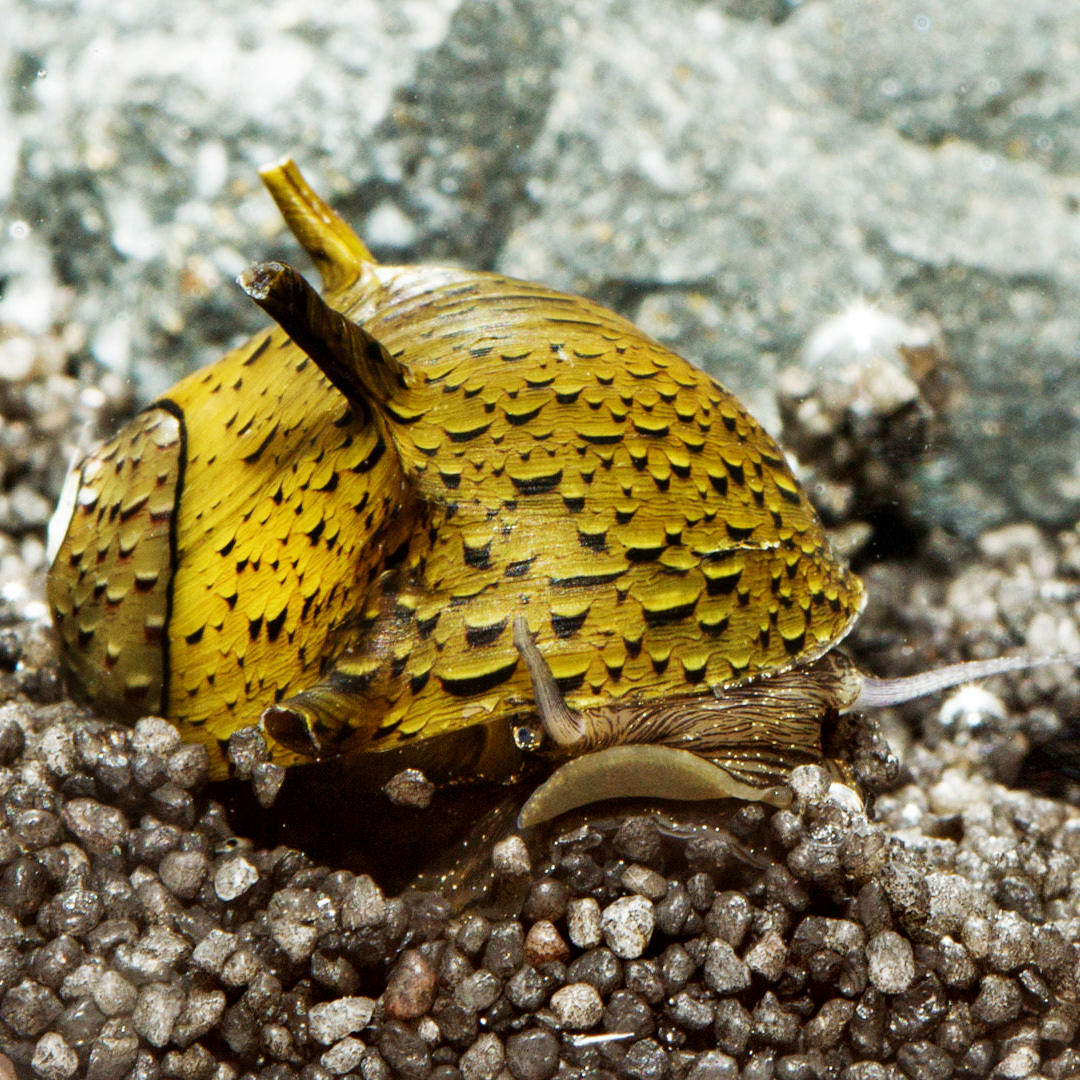Green Horned Nerite Snail
Clithon corona
The Green Horned Nerite Snail is not only very beautiful, but also a hard-working algae eater.
- very good algae eater
- yellow-green and black housing
- no reproduction in fresh water
1 in stock
 Delivery in a few working days
Delivery in a few working days
 Free shipping from €60 across Austria
Free shipping from €60 across Austria





Important data
Product description & details
The Green Horned Nerite Snail, Clithon corona, is a species of snail that is widespread in Southeast Asia and occurs, among other places, in the Western Pacific, Papua New Guinea, Taiwan, Japan and the Philippines. There it lives in estuaries of brackish water and lives in both freshwater and brackish water. Its appearance alone makes the Green Horned Nerite Snail, which is up to 2cm large, a sought-after aquarium resident. It has a beautiful, yellow to olive green shell on which you can not only see a delicate black pattern, but also occasionally a small horn, which gives the horned nerite snail or antler snail its name.
Care in the aquarium
As long as the basic needs of this horned nerite snail are taken into account, it is easy to care for. Due to its small size, it can be kept in aquariums starting at 30 liters. In their natural habitat, the water often has brackish water conditions, i.e. a slightly higher salt content. Nevertheless, the naturally very adaptable snail can easily be kept in a freshwater aquarium. As with most species of snails, medium to hard water is ideal, as the shell can be damaged if the water is too soft. Although extremely peaceful, the Green Horned Nerite Snail is very active. It spends the whole day eating algae and is particularly suitable for fighting algae in the nano aquarium. The Green Horned Nerite Snail, like all horned nerite snails, should not be placed in new tanks, but only in well-used tanks.
Feeding
Like all nerite snails, the Green Horned Nerite Snail is limnivorous, i.e. feeds on growth in the form of algae and bacterial films. Supplementary feeding is usually only necessary if the snail does not have enough biofilm in the aquarium. Spirulina and chlorella are ideal as feed.
Sexual characteristics and breeding
Clithon corona has separate sexes, but the sex differences cannot be detected from the outside. Breeding the Green Horned Nerite Snail is extremely difficult. The young animals require brackish water and go through various larval stages until they can be transferred back to fresh water as fully grown snails.





